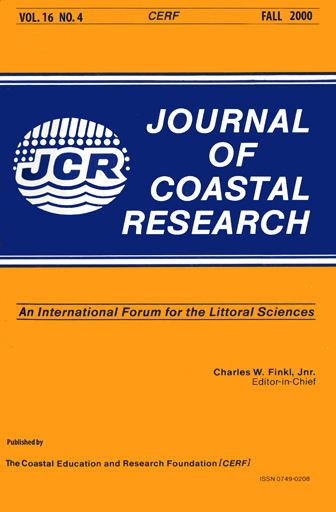Impacts of Winter Storms on Circulation and Sediment Transport: Atchafalaya-Vermilion Bay Region, Louisiana, U.S.A.
Keywords:
Coastal processes, sediment flux, resuspension, salinity flux, storm impacts, erosion, remote sensingAbstract
This study investigates the changes in circulation, sediment resuspension, sediment flux and salinity that accompany "winter storms" in the Atchafalaya Bay region, events that occur 20 to 30 times each year between October and April. NOAA-14 satellite reflectance imagery and time-series measurements of winds, water levels, current velocity and turbidity demonstrate that wind direction and speed are the major controlling factors for circulation, sediment transport and suspended sediment concentrations. East winds (occurring 62% of the time) induce a westward flow of sediment-laden Atchafalaya river water along the coast. West winds reverse the direction of plume movement and increase the size of the plume, partly as a result of Ekman processes. The strong north winds, characteristic of winter storms, cause rapid flushing from the shallow bays (30-50% of volume) and water level changes in excess of 1 meter. Seaward of these bays, a large sediment plume (180 km alongshore, 75 km offshore) is produced by the wind-wave resuspension of bottom sediments and the wind-forced seaward transport of bay and inner shelf waters. Water and sediment flux is primarily southeastward, temporarily disrupting the westward flow of river water along the coast. In the Vermilion-Cote Blanche Bay system, northwest winds maximize sediment resuspension and the seaward flux of sediment-laden river and bay water. The storm-related sediment resuspension and transport reduces the rapidity of delta development and deposition in these bays and re-distributes sediment along the inner shelf.


